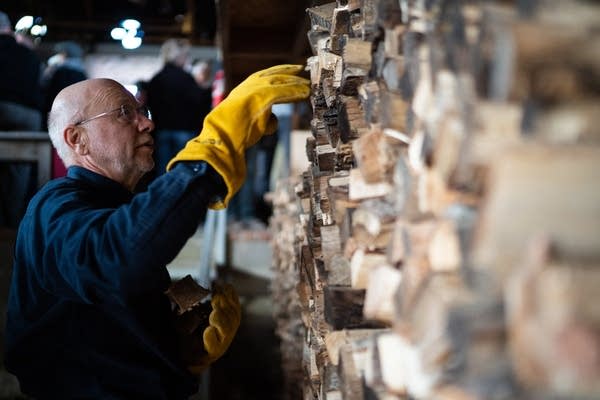St. John’s kiln firing is celebration of art, community

Richard Bresnahan picks from the 22 cords of wood that will be used to fuel the 10-day-long firing of the Johanna Kiln at St. John's University in Collegeville Friday.
Evan Frost | MPR News
Go Deeper.
Create an account or log in to save stories.
Like this?
Thanks for liking this story! We have added it to a list of your favorite stories.


